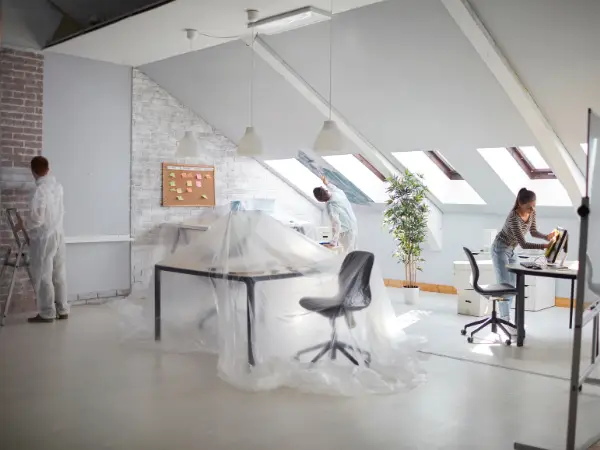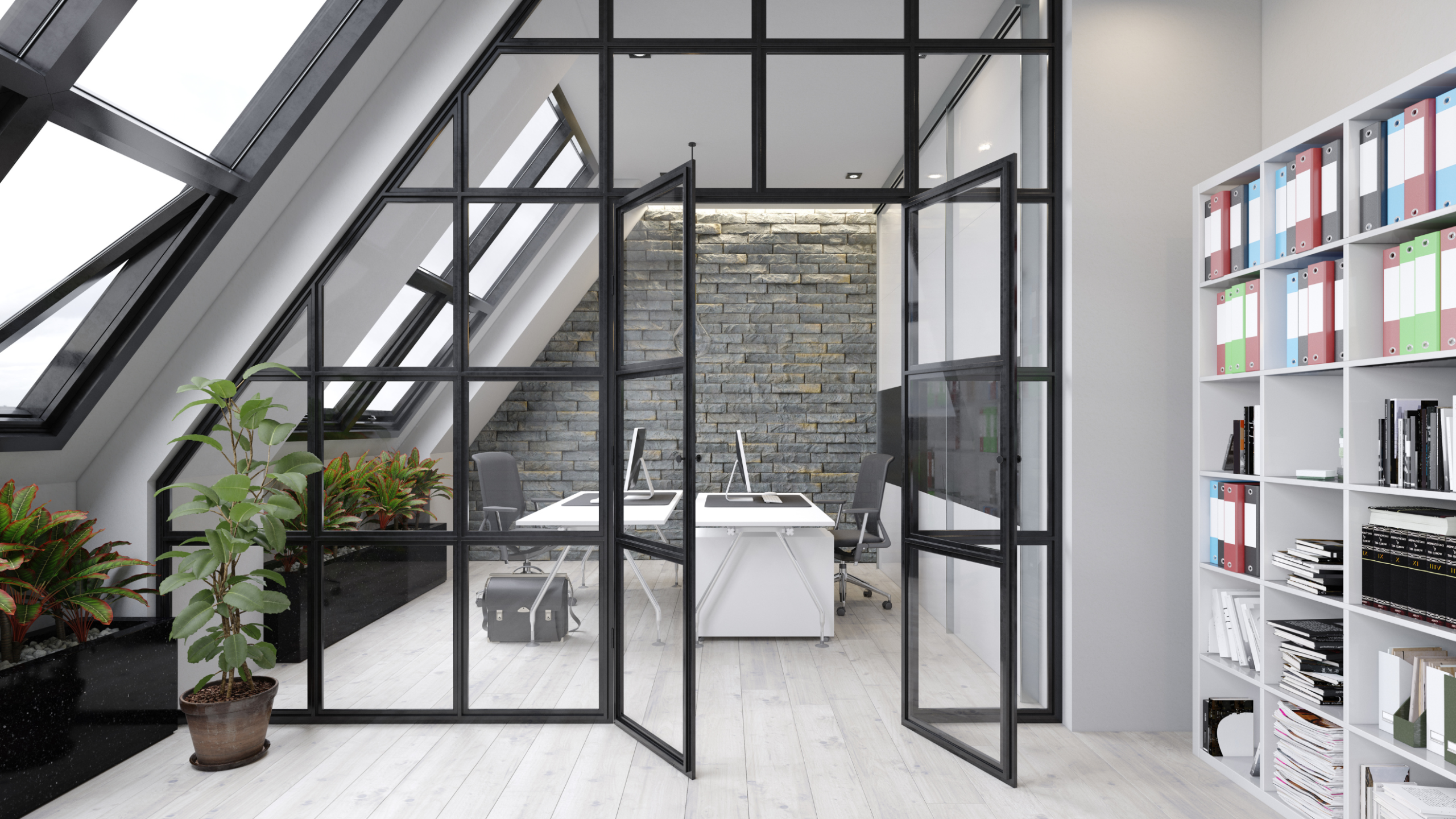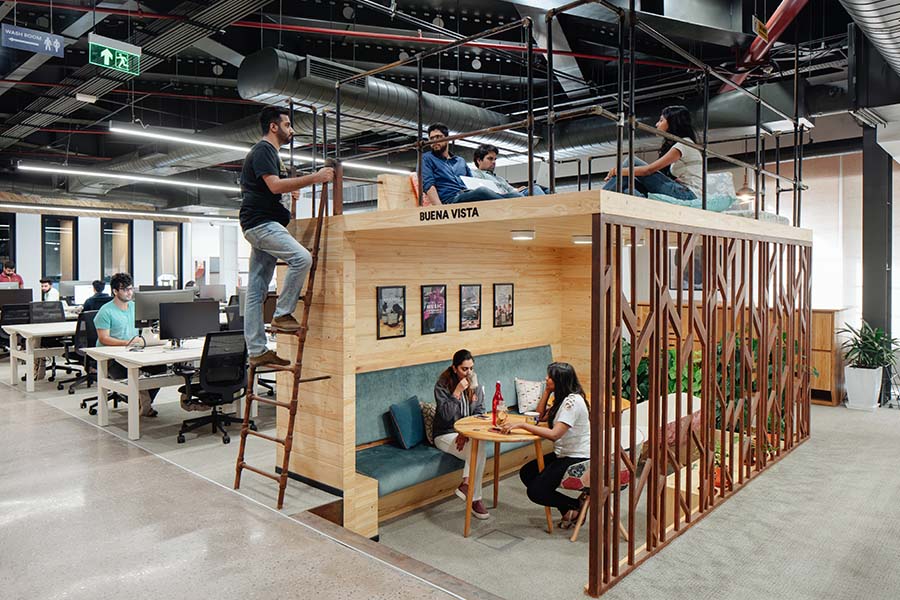When leasing or renovating office space, you’ll often hear the terms white box and grey box. These definitions play an important role in understanding your lease obligations, budgeting for your office fit-out, or planning an end-of-lease reinstatement.
If you’re not sure what these terms mean—or how they affect your responsibilities as a tenant—this guide will help you understand the difference and make better decisions for your business.
Understanding the Basics
Both “white box” and “grey box” refer to the condition of a commercial office space, either before a tenant moves in or after they’ve moved out. These terms help define:
What’s included in the space when you take occupation
How much work is required before it’s ready for use
What you may need to reinstate when your lease ends
The key difference lies in the level of finish and infrastructure included.
What Is a White Box Office Space?
A white box (also called a “vanilla shell” in some markets) refers to a semi-finished office space that includes basic interior finishes and is ready for final fit-out. The space is clean, presentable, and usually includes key components like walls, ceilings, lighting, and flooring.
A white box typically includes:
Painted internal walls
Finished ceiling (often suspended or flush plastered)
Basic lighting installed and operational
Electrical distribution boards and plug points
Basic HVAC (heating, ventilation, air conditioning)
Smooth flooring—either tiled, screeded, or carpet-ready
Fire safety systems in place (sprinklers, alarms, etc.)
Tenants moving into a white box space usually still need to install partitions, signage, furniture, and specialist IT infrastructure—but much of the heavy lifting has been done.
Pros of a White Box Space:
Shorter fit-out time
Lower initial fit-out costs
Easier to visualize and plan
Minimal construction work required
Suitable for fast-moving occupiers or temporary users
White box spaces are common in multi-tenant buildings where landlords want to attract businesses that need to move quickly and avoid large capital outlays.
What Is a Grey Box Office Space?
A grey box (also known as a “cold shell” or “bare shell”) is a more basic, unfinished commercial space. It typically lacks internal finishes and may not be fully serviced with lighting, aircon, or ceilings. It’s a blank canvas, often presented in its raw, industrial state.
A grey box typically includes:
Bare concrete floors (uncovered)
Unpainted or raw walls
No ceiling or exposed ceiling
No internal lighting or plug points
HVAC systems not installed or incomplete
Fire systems partially installed or omitted
No internal finishes or decorative elements
Tenants moving into a grey box space must complete a full fit-out, which often includes electrical work, plumbing, partitioning, ceilings, and flooring. This can add significant cost and time to the project but allows for a highly customized end result.
Pros of a Grey Box Space:
Maximum design freedom
Ideal for high-end or bespoke interiors
Easier for large corporate tenants with in-house design teams
Suited to long-term occupiers who want full control
Grey box spaces are common in new developments or office parks where tenants are expected to invest in their own layouts and finishes.
White Box vs Grey Box: What It Means for Fit-Outs
The biggest impact of white vs grey box space is how it affects time, budget, and planning.
If you’re leasing a white box:
You’ll spend less on infrastructure and base-build items
Your contractor can focus on layout, partitions, branding, and finishes
The project timeline is generally shorter
It’s easier to calculate costs and plan your move-in
If you’re leasing a grey box:
You’ll need a full project plan from scratch
Fit-out costs will be higher and more variable
Approvals and compliance (fire, electrical, etc.) may take longer
You’ll need expert input from designers and project managers early on
At Cape Interiors, we handle both scenarios. Our team works with you to assess the space, define the scope, and deliver a fit-out that works—whether you’re starting from a bare shell or simply customizing a white box.
Reinstatement: Returning a Grey or White Box
The type of space you start with also determines what you’ll need to hand back when your lease ends. This is where office reinstatement obligations come into play.
If your lease started with a white box:
You’ll likely need to remove partitions, signage, and branding
Restore finishes to their original state (paint, ceilings, etc.)
Return electrical, lighting, and HVAC systems to base-build standards
If your lease started with a grey box:
The landlord may require you to return it in the same raw state
Full strip-out of ceilings, lighting, and all fit-out items may be needed
You may be required to remove HVAC or plumbing installations
Misunderstanding this difference can lead to costly disputes. That’s why we always advise clients to review their make-good clauses before signing a lease—or before beginning their exit process. At Cape Interiors, our Office Reinstatement Services cover both white and grey box handovers. We handle the full removal, restoration, and cleaning, ensuring the space is returned in line with lease terms.
Cost Implications: White vs Grey Box
Let’s look at a basic comparison to help you understand the cost implications:
| Item | White Box | Grey Box |
|---|---|---|
| Ceilings & Lighting | Installed | Not included |
| Electrical Infrastructure | Partial | Minimal or none |
| HVAC | Base units installed | Often excluded |
| Fire Systems | Installed and tested | May require full install |
| Floor Finish | Screeded or carpet-ready | Raw concrete |
| Painting | Completed | Not included |
| Time to Occupy | Shorter (4–6 weeks) | Longer (8–12 weeks) |
| Budget Impact | Lower fit-out cost | Higher fit-out cost |
Which One Should You Choose?
It depends on your:
Timeline: If you need to move in quickly, a white box is easier to work with.
Budget: A white box reduces upfront investment.
Custom Needs: A grey box gives you full creative control.
Lease Term: Longer leases may justify the investment in a grey box space.
Brand Standards: If your brand has strict design requirements, a grey box might be a better fit.
If you’re not sure, we’re happy to conduct a site visit and give you a full assessment of costs, timeline, and project scope based on the space condition.
How Cape Interiors Can Help
At Cape Interiors, we provide a full range of commercial interior services to support both white box and grey box office spaces.
We offer:
Fit-out project management for white and grey boxes
Space planning and design services
End-of-lease reinstatement and make-good work
Multiple quotes from trusted local contractors
Full compliance with fire, health, and lease standards
We operate in both Cape Town and Durban, giving you on-the-ground support in major commercial hubs.
Final Thoughts
Understanding the difference between a white box and grey box office space is critical when leasing, fitting out, or reinstating a commercial property. It affects your project cost, timing, and legal obligations—so it’s not something to overlook.
If you’re planning an office move, lease exit, or renovation, we can help you make sense of the space condition and plan your next steps.
📞 Get in touch with Cape Interiors
📧 Request a site inspection
🖥️ Submit your project online for a quote
We’ll help you make informed decisions—whether you’re starting from a raw shell or a near-finished space.







